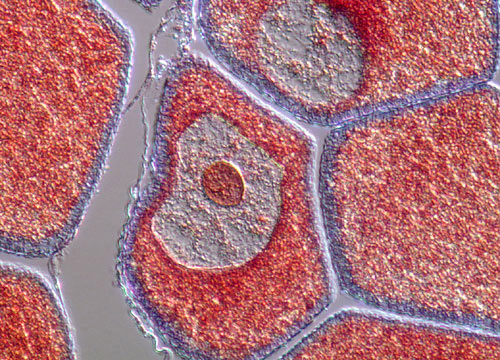Lancelet (Amphioxus) Pharynx
The amphioxus is a small, slender fish-like organism that spends the majority of its time buried in gravel or mud on the ocean floor. Sometimes alternatively referred to as lancelets, the marine animals rarely grow longer than a few inches long and are most often found around the coasts of warm regions of the world.
 DIC
DIC
 Phase
Phase
Phase
When Piotr S. Pallas discovered amphioxi in 1778, he misidentified the marine animals as slugs, an understandable mistake most likely caused by their tapered, sheathed forms without eyes or defined heads. The creatures, which do not have brains or hearts, most often swim at night. To do so, amphioxi contract the staggered muscle blocks that line both sides of their bodies, moving from side to side. Since they are not buoyant, whenever the invertebrates cease to swim, they sink. During the daytime, amphioxi usually remain buried under the bottom of the ocean, but allow the anterior end of their bodies to protrude during feeding so that they can filter particles that pass through their gill slits.
DIC
Unlike other members of the phylum Chordata, amphioxi are capable of phagocytosis, a digestive process in which food particles are consumed by individual cells. The oral cavity of the small animals is lined with cirri, which act as a food filtration system. Cilia fringing the gill slits direct water through the small mouth opening of the organism into the pharynx. The mucous membrane of the gill basket catches food particles in the water and passes them to the gut where they are exposed to various enzymes that initiate digestion.













